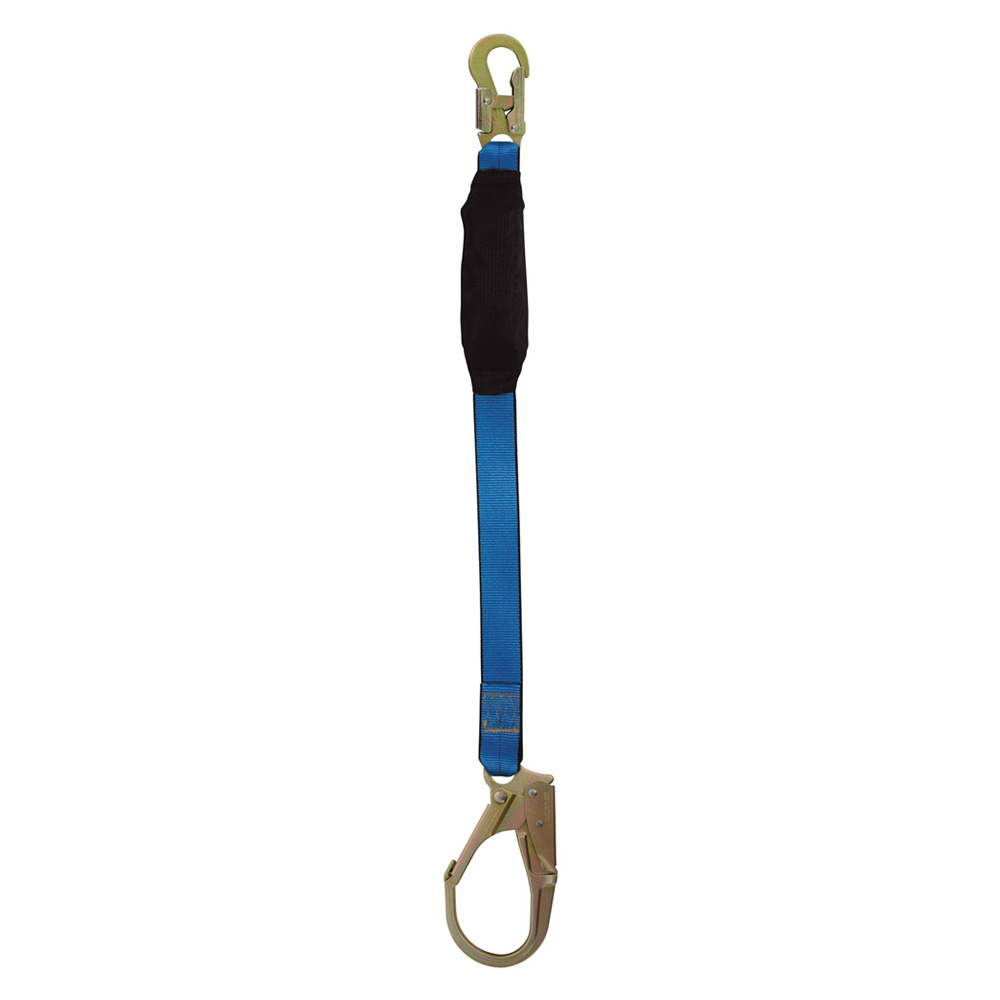
You are a conscientious Site Manager. As your crew works around the clock to complete your project efficiently, naturally, you want to ensure that each employee works safely and is OSHA compliant. But fall protection involves more than being well-versed in the OSHA regulations for your industry. You also need to think about which kind of fall protection equipment is actually smartest for the job at hand. Knowing how said equipment is used is also crucial to selecting the right system. Today, we’re taking a closer look at both self retracting lifelines (SRLs) and safety lanyards—and which one might be right for you and your team.
First, What Are They?
Remember the ABC’s of fall protection? That’s the components that make up a fall arrest system: Anchorage, Body Support, and Connection. As the ‘C’ component, a connecting device creates a steadfast connection between a worker’s body harness and an anchoring point. Self retracting lifelines and fall protection lanyards are the two most common connecting devices, yet are distinctly different.
Fall Protection Lanyards
A fall protection lanyard (or safety lanyard) is a set length of rope, webbing, or wire rope. Designs often incorporate an internal or external shock absorbing feature. Shock-absorbing lanyards are a bit more versatile and can be used for purposes such as fall arrest, work positioning, or restraint. Non-shock absorbing lanyards can be used for restraint only. Safety lanyards are connected to a fixed anchor point, which can limit the wearer’s work radius. They tend to be less expensive than SRLs, so for smaller jobs or for the budget-conscious manager, they may be a good choice.
Self Retracting Lifelines

Safety Lanyard vs Self Retracting Lifeline: Which Is Right For You?
Different situations call for different equipment, and fall safety is no exception.
Job Type
The type of connecting device that you select largely depends on the job you intend to complete. Will the connecting device be used primarily for general fall arrest, work positioning, or ladder climbing? For use as a restraint system, you might consider a fall protection lanyard. For use as a retrieval system, an SRL with retrieval capabilities would be a more appropriate choice. Also, ask yourself, where can you install your anchor points? If it’s on the walking-working surface, you’re likely looking at a fall protection lanyard. If it’s overhead, you can use an SRL.
Work Radius
What’s the size of your work area? With a fixed anchor point, a worker using a fall protection lanyard only has a six-foot radius. This makes for a relatively small region in which to maneuver. If they need to move beyond, they’ll need to connect to a new anchor point. With a self retractable lifeline, however, that same worker can cover much more ground.
Fall Clearance
In addition to work radius, you also need to think about fall clearance. Fall clearance is the minimum vertical distance required between an employee’s feet and a lower level. When the fall clearance remains constant, choosing a lanyard may make sense. However, if a worker’s distance changes throughout the day (think: adding floors to a construction frame), then a self retracting lifeline may be the more effective option.
Leading Edge Work
Many self retracting lifelines are designed to be anchored to an overhead anchor point. This is often impossible in leading edge applications—forcing the user to use the SRL horizontally. Keep in mind, though, not all SRLs are fit for horizontal use. Over time, if a self retracting lifeline repeatedly travels over the edge of a flat surface, the webbing can begin to fray. Furthermore, the force generated by a fall arrest over a 90° angle can be strong enough to break through the lifeline altogether. In this case, fall protection lanyards are a safer bet. No matter which you decide to go with, make sure you confirm with your manufacturer that your device is safe in this capacity.
Training Is Essential
Whenever you buy new fall protection equipment, remember: training is essential. Knowing the proper use of your safety lanyard or self retractable lifeline is especially important because unlike passive fall protection like guardrails, they require active participation from their users. Everyone you expect to use your new equipment must be thoroughly trained in how to inspect, put on, and attach their body harnesses and their lifelines. They’ll also need to know the signs of wear and tear—and that if there is any question of damage to the equipment, to take it out of use and get a replacement.
When you have a project on your mind, figuring out the nitty-gritty of fall safety can be an added stressor. That’s why partnering with a trusted manufacturer is always a good business decision. Give us a call today and we’ll help you determine what your best options are for your job—no matter how big or small.






